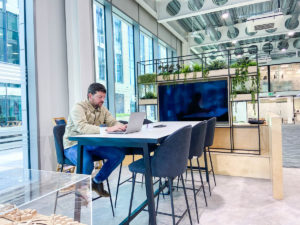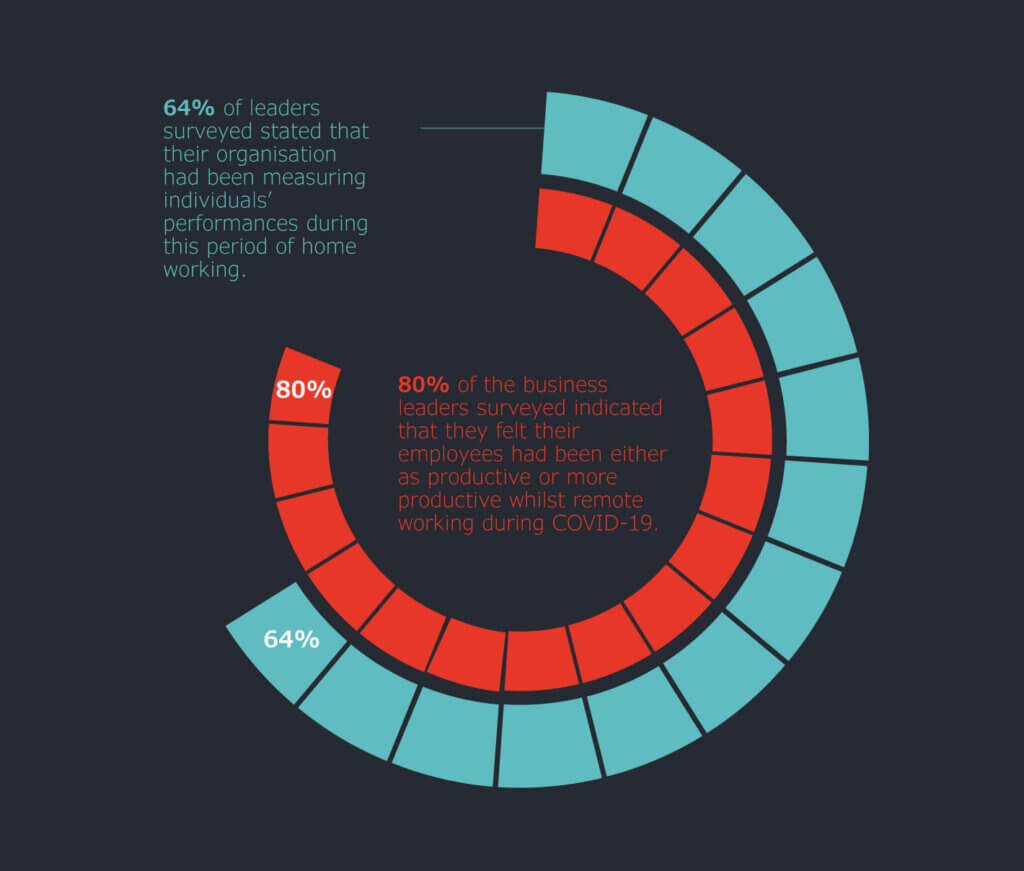
How do I get hybrid working right in my business?
Getting hybrid working right is turning out to be anything but clear cut. Learn more about the considerations in our recent article
During the UK lockdown, working from home has become the new norm, and regardless of when offices return to work, the impact of such a long period of time away from the office is bound to change the way businesses operate forever.
For many COVID-19 has highlighted the positives of working from home but for many others it has exposed the flaws of working from home – constant distractions, communication and technology issues, and the inability to monitor employee performance – to name just a few examples. Some businesses feel empowered by the current situation and would like to implement this long term in to their business but may others feel reluctant to ever let their employees work away from the office again – it may have even put some employers off the idea of flexible, and even agile working altogether.
Alas, whichever side of the fence you and your organisation sit on currently the issue of Agile/flexible working is one that needs to be considered in more detail as being forced to work from home, and having the freedom to work from home are two very different things. What businesses are currently experiencing isn’t agile working, but a response to a global pandemic. In fact, adopting a real agile way of working could’ve actually helped businesses avoid WFH barriers altogether, and allowed them to adapt to working life under lockdown.

Many employers fear that when employees aren’t in the office, they won’t be able to communicate as well as they should. This could be a valid concern for some, as working from home during lockdown has seen some businesses struggle to adapt to using technology as a primary form of communication. Additionally, it can be easy for employees to isolate themselves or not communicate as much as you’d like them to, which can cause problems both for your team and you, as an employer.
According to this study conducted by The Economist, causes of poor communication include:
All of which have likely been accelerated by the COVID-19 lockdown.
Based on this study, the technology being used causes many communication problems, suggesting that managers need to tailor their communication styles to their employees in order for them to be effective, taking into consideration generational differences and technology.
Employers wanting to be more agile need to implement better collaborative technology to facilitate better communication amongst teams – where all employees can be contacted no matter where they are. Adopting this mindset ensures team members can operate with a clear understanding of what they need to accomplish and expectations of when goals should be met. Routes to communication should be made clear, and employees working remotely should know how and where to access support as easily as they could in the office. Switching to this agile mindset ensures that you’ll never have communication issues as prominent as those in lockdown.
When lockdown began, it forced many companies to invest in technology that would allow employees to work from home effectively, such as laptops, tablets and other forms of tech. Suddenly, organisations that never previously entertained the idea of working from home were doing it, and this opened many minds to the possibility of it becoming a permanent practice in many businesses. Naturally, however, there are some barriers.
From using laptops for mobility, to ensuring that employees have wifi access and a quick broadband speed – technology is a key driver in allowing staff to work remotely. However, as many found during lockdown, issues with Wi-Fi and connecting to internal servers can lead to a decrease in productivity and a lot of frustration – which may make many reluctant to work from home in the future.
This makes the investment in technology a complete necessity for businesses moving forward.
We can now reach people 24 hours a day, 7 days a week, and the advancement in technology means that we’re able to work from almost anywhere. Working habits have changed to reflect this, and employees no longer need to be physically in the office between the hours of 9 to 5 every single day. Technology such as video conferencing, time management systems and cloud-based tools allow millions to work from home, in a coffee shop or even halfway across the world with no trouble.
It is this freedom of movement that makes technology the heart of agile working – work is an activity, not a place.
Attitudes towards investing in technology to facilitate mobility is changing. Prior to COVID-19, many businesses were reluctant to adopt new technologies due to fear of change and budget concerns; however, the impact of lockdown has made many businesses realise that their workforce can be reactive, adaptable and that change needs to be embraced.
Our research report found that 79% of businesses will look to leverage technology more post COVID-19, and 29% will consider switching to a more agile way of working. When adopted effectively, agile working can not only remove the WFH barriers employers are concerned by, but help you modernise your business.
As James Bunce, director at Capita IT Services states:
“An agile workspace is not just a luxury for organisations but is fundamental to their success and ability to compete.”
In the post-pandemic world, businesses will need the help of technology to future-proof themselves, and will need to invest in facilitating their staff to work where they feel best, or risk losing out to their more well-prepared competitors.

A key concern many employers have about their employees working from home is that they aren’t as productive, or they aren’t doing as much work as they would be in the office. While this could be the case for some workers, it isn’t true for all.
In fact, our research report revealed that 80% of the business leaders we surveyed felt their employees had been either as productive or more productive whilst remote working during COVID-19.
Traditionally, employees have been measured by the time spent in the office, doing an allotted amount of work – with no real allowance for remote working.
The reason for this?
Often, it’s management attitudes that haven’t changed to support the needs of the modern workforce.
In fact, our research report found that 62% of respondents highlighted management attitudes as a key factor in remote working having not previously been adopted in their business.
While many employees may feel that it’s down to the distrust of their employers, this isn’t always the case. Often, it’s the way employers actually measure their employees’ output. They have no way of knowing what work is being completed, or how their employees are getting on, due to somewhat outdated methods of measuring success.
When working in an agile environment, employees are measured on deliverables – where the emphasis is placed on the completion of a task, rather than how or where it is done. Switching to this more agile way of working and giving employees more responsibility over their work gives them the freedom and flexibility to complete work on their terms, without being micromanaged. While it can be difficult for upper management to adopt this mindset, often, the resulting productivity and improved satisfaction speaks for itself.

As previously mentioned, managers often believe that allowing employees to work from home will lead to them perhaps “slacking off”, when in fact, the opposite is far more likely. There are concerns that due to advancement in technology (among other factors), by allowing employees to work from home, it may actually cause them to work more – destroying their work-life balance.
Those that work from home regularly may feel that they still need to be “seen” by management, which could result in them starting work earlier or continuing to work later simply to prove that they are working hard. This can easily foster bad working habits, and if not handled properly can lead to more serious issues further down the line.
This is one of the main reasons why switching to an agile way of working isn’t simply a process change, but a complete shift in company culture and mindset. If employees feel like they need to work longer hours to be deemed as valuable as their colleagues, this isn’t agile.
Adopting an agile approach to work involves empowering your workforce to take ownership of their preferred way of working, while fostering a supportive workplace culture where employees know what is expected of them and are comfortable with their work. Agile working should facilitate better working habits, not push your employees to work more than they need to.
As most businesses know, change is inevitable. That being said, not many were prepared for the fallout of COVID-19, which has taught us a valuable lesson.
While we don’t necessarily have control over change, what we can control is how we respond.
This is a core principle of the agile methodology, and will become imperative in how businesses move forward after COVID-19. Arguably, one of the biggest challenges surrounding working from home during lockdown was the lack of preparedness to do so, and it left many businesses struggling. Undoubtedly, switching to an agile way of working can help ensure this doesn’t happen again.

While the future is somewhat uncertain for businesses, what is inevitable is the cultural shift and change in attitudes towards previous, traditional ways of working. Agile could be this change.
With employees empowered to work where they feel best, they become fully adaptable and reactive to change. Working from home barriers are dismantled, and with the right technology, employees are able to work better than ever before.
However, switching to an agile way of working requires more than a process change – but a cultural one too. In order to prepare your business for the future and modernise your workforce, you’ll need to change the way everyone in your organisation views both your office and work itself.
Advice Centre Topics
Related Content

Getting hybrid working right is turning out to be anything but clear cut. Learn more about the considerations in our recent article

Recruitment and retention are now key priorities for most business leaders.
But what’s driving so many people to change jobs? Learn more in our article
Content that may interest you
Do you have an office fit-out project you would like to discuss?
Contact us for a no obligation discussion
Dale Office Interiors
Broombank Rd, Sheepbridge Ln, Chesterfield
S41 9QJ
Phone: (0)114 233 1115
Email: [email protected]